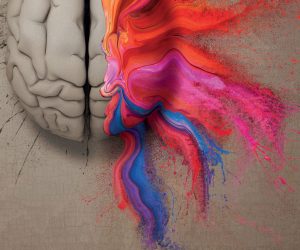Pain is a complex cognitive and emotional experience, which means that understanding the structure of our pain experience is far from easy. Our beliefs and expectations about pain alter perceptual, emotional and behavioural responses and, as such, can play a critical role in adapting to long term pain conditions. The symposium will consider pain’s meaning, how this shapes the experience of the individual in pain and how this, in turn, shapes their interactions with the environment. We will take an inter-disciplinary approach to these questions, drawing from Philosophy, Anthropology, Psychology and Neuroscience. We will also attempt to translate these perspectives into the clinical domain. The second day will be organised as an interactive discussion led by Dr. Salomons, Dr. Ravindran, and Dr. Thacker, examining how our understanding of pain-related beliefs and expectations might be integrated into clinical practice.
Audience:
The symposium is designed to bring together people interested in the philosophical, neuroscientific, and clinical examination of the elements which structure pain experiences, asking how propositional and affective states (e.g. beliefs and feelings) alter the pain experience and how such knowledge should properly inform clinical practice.
You can book tickets
here or find out more information about the event on the website, including a full
schedule and list of
speakers here.
Virtual technologies have become increasingly prevalent in the modern world. The affordability of such technologies have made them accessible across disciplines and we continue to see a growing interest in using virtual tools and simulated realities, not only in the playground of game-related development but now across several research divisions.
This interdisciplinary symposium will explore applications of Virtual Reality (VR) and Augmented Reality (AR) in various fields across the arts, the humanities, and the social sciences.
There are three main aims for the day:
1) To introduce the concept of VR
2) To explore the value, impact, and contribution of using VR in various fields
3) To provide hands-on and interactive experiences for individuals who are interested in utilising these technologies
Entry is free but booking ahead is essential – click here to book tickets
By Inge Lasser, Centre for Integrative Neuroscience and Neurodynamics, University of Reading

Professor Doug Saddy’s lecture entitled “Augmented Humans: mind and machine” changed the way I think about myself and about the role that brain science will play in the progression of society. As an administrative manager at the Centre for Integrative Neuroscience and Neurodynamics (CINN), of which Doug Saddy is the Director, I speak to brain scientists every day. I hear them talk about data, methodology, analytics, responses, levels, and everything that matters for doing fundamental research. Like all scientists, the members of the CINN rejoice when a new study is funded or a paper has been accepted. What Saddy’s presentation gave me is a hugely fascinating view of the “bigger picture” in cognitive neuroscience.
Listen to Saddy and you will learn that you extend into the environment beyond your physical self. In other words, we are all incessantly generating not only acoustic signals, but also electrical, magnetic and biochemical information, voluntarily and involuntarily. Vice versa, our environment extends into us. Humans constantly leak and absorb information. This leads to them, you and me, being in a constant mode of change.
Continue reading →

